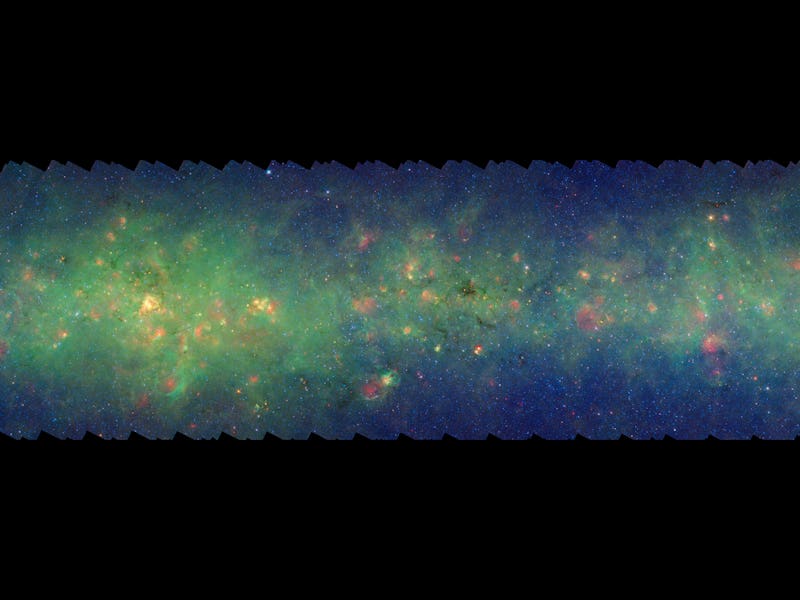How Big Is the Milky Way, Anyway?
When you try to account for dark matter, that number gets a little tricky to figure out.

There’s a race among the astrophysics community to determine the mass of the entire Milky Way galaxy. That figure takes into account the collection of stellar matter, gases, rocks, dust, and other natural junk flying around through the vacuum of space. But it misses a precise measurement of one very critical yet very elusive substance important to the Milky Way (and every other galaxy, for that matter): dark matter, which comprises about 85 percent of all matter in the universe.
The short answer is that it’s about the mass of the sun times 700 billion. The sun has a mass of two nonillion — that’s a 2 followed by 30 zeros — kilograms, which is 330,000 times the mass of Earth.
In the race to pinpoint what the mass of the Milky Way is when it includes dark mater is Gwendolyn Eadie, a Ph.D. candidate in physics and astronomer at McMaster University in Ontario, Canada.
In a study submitted to The Astrophysical Journal and presented at the Canadian Astronomical Society’s conference today in Winnipeg, Eadie demonstrates a new method of calculating the galaxy’s total mass by adding the velocities, positions, and orbits of globular star clusters to better determine where the galaxy’s major gravitational forces are centered, and how powerful they are.
See, dark matter is important to scientists because, while we’ve never actually observed it directly, we’ve observed its effect on other objects in space. We see the orbits and movements of other objects zipping around the universe and have watched them behave in unusual ways that can only be explained by a massive clump of matter sitting nearby and creating a powerful gravitational effect.
The star-studded center of the Milky Way towards the constellation of Sagittarius
To that effect, Eadie and her colleagues focused on measuring and observing what are called globular clusters — spherical collections of stars that themselves orbit a galactic core. If you follow how a globular cluster moves and orbits the center of a galaxy, you can perhaps locate where those dark matter agglomerations lie — and their size.
Unfortunately, scientists so far only have a partial notion of the velocities and motions of those globular clusters.
Eadie decided to work around this problem by taking these partially-known velocities, and merging them with velocities of GCs that are fully known — then estimating the mass of the entire galaxy based on those numbers.
360-degree panorama view of the Milky Way (an assembled mosaic of photographs) by ESO. The galactic centre is in the middle of the view, with galactic north up.
The result? An estimated Milky Way mass that comes out to about 7 x 10^11 solar masses — so about 700 billion times the mass of the sun.
So if we haven’t found dark matter yet, at least we’re getting better at predicting exactly what kind of role it plays in our own galaxy — and the universe as a whole.